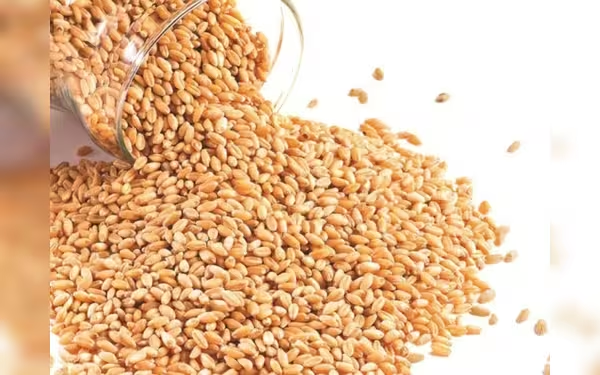Saturday, November 16, 2024 05:36 PM
Wheat Prices Decline Amid Demand Concerns Yet Poised for Weekly Gain
- Wheat prices drop due to U.S. demand worries.
- Dry weather in Russia impacts wheat planting.
- Traders await USDA reports for market insights.
 Image Credits: brecorder
Image Credits: brecorderWheat prices fall due to demand concerns but are set for a weekly gain influenced by dry weather in Russia.
Wheat prices have recently experienced a decline due to concerns over demand, particularly for U.S. cargoes. However, despite this drop, the market is poised for a weekly gain, largely influenced by dry weather conditions that are hindering planting efforts in Russia, a leading wheat exporter. This situation highlights the complex dynamics of agricultural markets, where weather patterns and demand fluctuations can significantly impact prices.
As of the latest reports, the most-active wheat contract on the Chicago Board of Trade (CBOT) fell by 0.8%, settling at $5.79-3/4 per bushel. In contrast, soybeans saw a slight increase of 0.1%, reaching $10.41-1/2 per bushel, while corn prices dipped by 0.4% to $4.11-1/2 per bushel. Over the course of the week, wheat has managed to climb by 2%, recovering from previous losses, while soybeans and corn have also shown positive trends, gaining nearly 3% and 2.5%, respectively.
The decline in demand for U.S. wheat shipments has exerted additional pressure on prices. Furthermore, the Sovecon consultancy reported that winter wheat sowing rates in Russia have plummeted to an 11-year low due to drought conditions affecting key agricultural regions. This has led to a revised forecast from Russia’s IKAR agricultural consultancy, which has lowered its wheat crop estimate for 2024 to 81.8 million metric tons, down from 82.2 million tons. Similarly, the overall grain crop forecast has been adjusted to 124.5 million tons from 125 million tons.
Traders are now closely monitoring upcoming reports from the U.S. Department of Agriculture, which will provide insights into the annual small grains summary and quarterly grain stocks. These reports are expected to shed light on the current state of the market and help traders make informed decisions.
In Brazil, drought conditions have delayed the start of the soybean planting campaign, although there is hope that rainfall next month will allow farmers to begin their work in the fields. Meanwhile, Argentina’s Buenos Aires grains exchange has indicated that it may revise its forecast for corn planting if the country’s agricultural regions do not receive adequate rainfall in the coming weeks.
On the trading front, commodity funds were net sellers of CBOT soybean, soyoil, wheat, and soymeal futures contracts on Thursday, while they were net buyers of corn futures contracts. This activity reflects the ongoing volatility in the agricultural markets, where traders must navigate a landscape influenced by both domestic and international factors.
The agricultural market remains in a state of flux, with weather conditions and demand playing pivotal roles in shaping prices. As traders and farmers alike keep a close eye on these developments, it is clear that understanding the interplay between supply and demand is crucial for making informed decisions in this ever-changing environment. The coming weeks will be critical as we await further data and weather patterns that could significantly impact the agricultural landscape.













